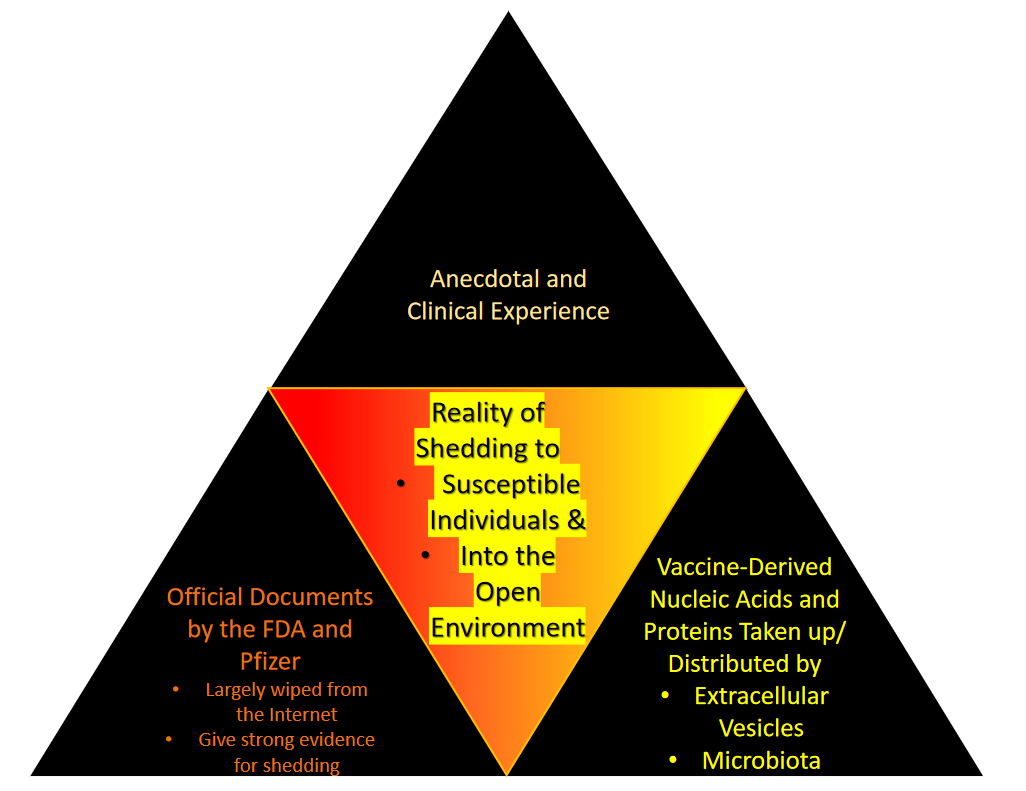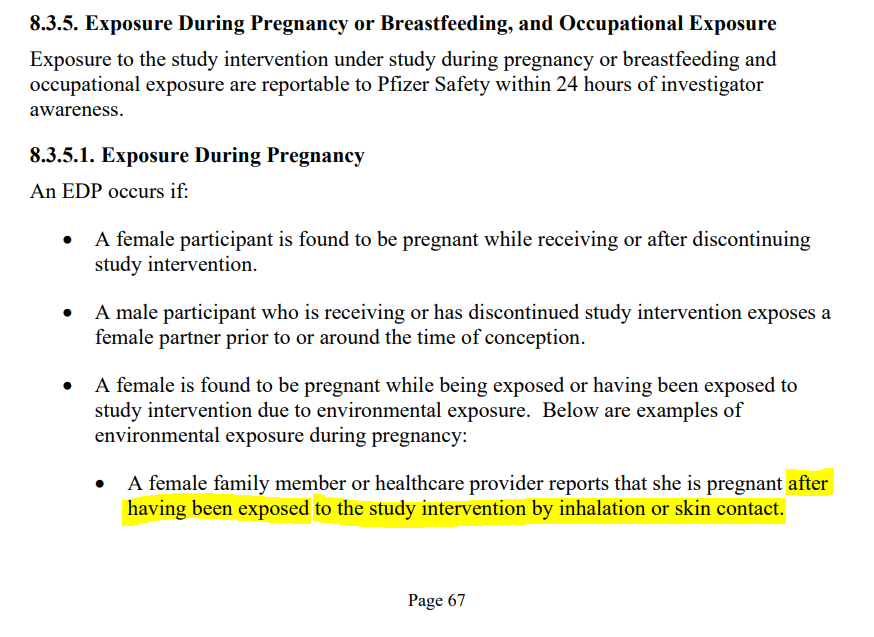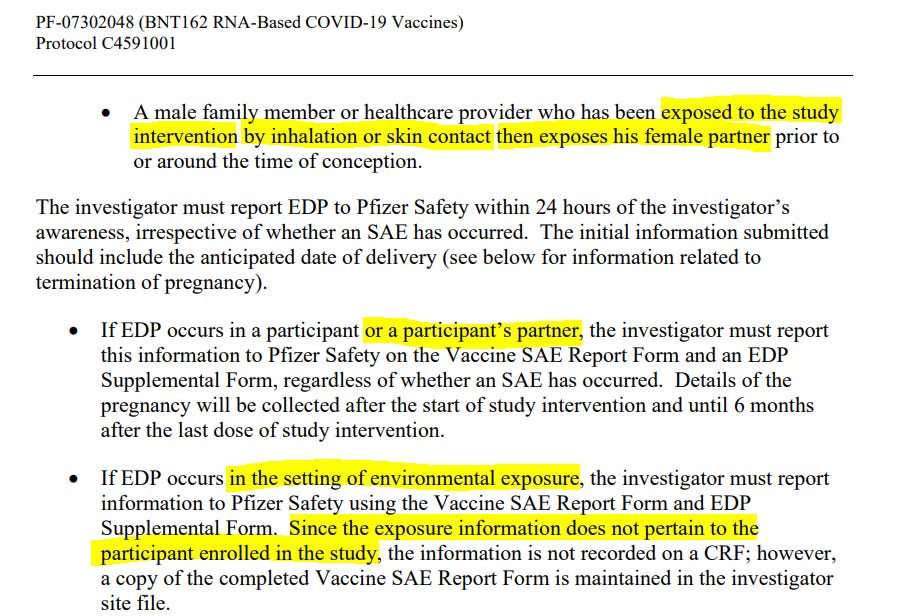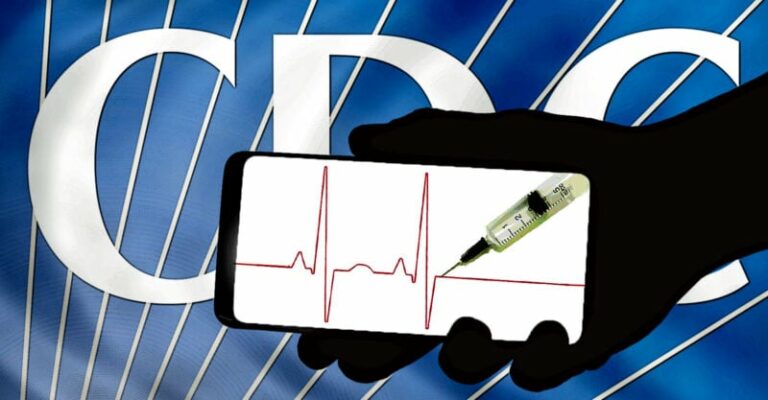The shedding of mRNA vaccines to susceptible individuals and into the open environment means uncontrolled spreading of biologically active material – PART 1
Source: Siguna Mueller Ph.D. Ph.D., Siguna’s Substack, 04 March 2024
In my book, I extensively discussed the dangers of the persistence and dissemination of mRNA vaccine-derived nucleic acids and their protein products, both related to the Covid-19 vaccines and a 2017 Moderna vaccine candidate. In addition to the grave adverse effects on each vaccinated person, I also highlighted the danger of “shedding” various vaccine-derived and associated material (vaccine-derived mRNAs, micro RNAs, the anticipated spike, unintended proteins) to susceptible individuals and the environment.
This topic has been shunned by MSM, regulatory bodies, PH officials, and even many scientists, even though before the pandemic, the risks were openly acknowledged.
Thanks for reading Siguna’s Substack! Subscribe for free to receive new posts and support my work.
In recent years, alternative media have covered important aspects, mostly related to the shedding from vaccinated to unvaccinated individuals. In this 2-part series, I will analyze and extend these concerns (summarized in the figure).

This first part focuses mainly on the impact on humans whereas the second part will provide several reasons why the lack of awareness, recognition, and regulation engenders dangerous gain-of-function type experiments in the open environment that, in turn, can be misused to support the One Health agenda and facilitate an ongoing exploitation of humans and all of life via (1) such mRNA-vaccine-derived large-scale pollution with biologically active material, (2) the synthetically-derived genetic material fostering the development of new pathogens, and (3) hyper-surveillance of “environmental” pathogens, incomplete knowledge, and flawed models driving the rollout of novel vaccines.
Prolonged Presence and Wide Distribution of the Vaccine mRNA and/or the Spike Protein
To be of concern to individuals and the environment overall, the injected material and its products must be present in sufficient amount and duration. Unfortunately, we now know that this is the case, and this is the basis of the detrimental effects on those who have received the jabs.
Wide distribution of the injected material and its products
It is now well established that because of the pseudouridine and various codon optimization mechanisms employed by both Pfizer and Moderna, the synthetic mRNA is unexpectedly stable and its protein products can also not be normally degraded. For example (the first three points are further detailed in my book).
- The study by Ogata and collaborators provides evidence of systemic detection of spike and S1 protein production from the mRNA-1273 vaccine.
- Bansal et al. found a very long-term persistence of the vaccine spike of BNT162b2, and surprisingly, circulating exosomes expressing spike protein for at least four months after the second injection (but see also below).
- Extensive biodistribution of Moderna’s 2017 flu “Vaccine” candidate (but note they portrayed this differently – please see my investigation of their arguments in Chapter 9)
- Brogner and colleagues not only developed a proteomic detection method to distinguish the viral spike from one induced by the mRNA injections. (Specifically, the latter recombinant Spike protein, called PP-Spike, differs from the natural one by a double amino acid change introducing two proline amino acids in order to stabilize the Spike conformation in an inactive prefusion state). They were able to demonstrate the presence of the specific PP-Spike fragment in the bloodstream in 50% of the vaccinated. The minimum and maximum time at which PP-Spike was detected after vaccination was 69 and 187 days, respectively, even independently of the SARS-CoV-2 IgG antibody titer.
- Vaccine mRNA is concentrated in extracellular vesicles (EVs) in human breast milk (BM). The authors emphasize that “the COVID-19 vaccine mRNA is not confined to the injection site but spreads systemically and is packaged into BM EVs.” (While the authors were able to detect trace amounts of mRNA 45 hours post-injection, they did not detect LNPs in the BM.)
- Patterson and colleagues were able to demonstrate that CD16+ monocytes from Covid-19-vaccinated patients contained S1 protein months after vaccination. Furthermore, they found that these cells also contained peptide sequences of S2 as well as mutant S1 peptides. To date, the observation that these highly mobile cells carry spike-related peptides has only been published as a preprint; however, due to their trafficking propensity across the blood vessel wall and migration beyond the endothelium, seems highly relevant in this context of the mRNA vaccine material and resulting products.
Several mechanisms lead to a reservoir of vaccine products
The prolonged persistence of the vaccine-derived nucleic acids (the intended mRNA or aberrant species), the resulting spike protein, or other protein products, may be facilitated by several mechanisms.
- The potential of the genetic injections to find their way into the nucleus and even lead to some (retro)integration events into human DNA has been intensely discussed, and even more so censored. A substantial proportion of my book deals with these important matters (this was before the DNA contamination events became known, so the genotoxicity issues I discuss pertain to the original manufacturing Processes 1 alone). Some points worth noting are:
- Several studies have shown the potential of vaccine mRNA to retrointegrate into the human genome. This is facilitated by various reverse transcriptase mechanisms present in human cells.
- There are many ways in which vaccine-derived dsRNAs have substantial genotoxic potential.
- These types of findings have received substantial blowback and some have been retracted.
- Nonetheless, the potential of the mRNA vaccine spike protein sequence to integrate continues to be confirmed by more recent studies (see e.g. the paper by Dhuli & Medori and colleagues).
- It also seems possible that pseudo-uridines (or other codon optimizations), as done for the Covid-19 mRNA vaccines, induce the formation of a spike protein that is always active.
- Involvement of the microbiome:
- In my book, I develop several hypotheses how vaccine-derived RNAs, in particular dsRNAs and other fragmented short RNAs (various micro RNAs), could (a) be transferred to the human microbiome, which (b) in turn could engender various genotoxicity concerns, perturb RNA regulation and otherwise contribute to disease progression.
- Independently, Brogna and collaborators reason that it should be possible that “the mRNA-containing nanoparticle will be picked up by bacteria normally present at the basal level in the blood. In fact, the existence of blood microbiota in clinically healthy individuals was proven during the last 50 years.”
- In my book, I also developed the hypothesis that mRNA vaccines have the potential to substantially disrupt microbial species in the environment (e.g. soil bacteria). Even though we have no conclusive proof of this, the impact of such a disruption across scale could be catastrophic and may in some instances even be inheritable.
SARS-CoV-2 and the human microbiome
When discussing issues with the injections, often the counterargument is that the analogous problem for the infection is much worse. While SARS2 can be dangerous to susceptible individuals, the risks of the virus pale in comparison to the jabs, and even more so at scale.
Bacteria in the human gut microbiome can produce toxins and can also become more pathogenic as they are under selective pressure by antibiotics and other chemicals. Also, the interaction between prokaryotic cells and viral pathogens remains poorly understood.
Surprisingly, SARS-CoV-2 seems to have bacteriophage behavior or induce the activity of other bacteriophages. Additionally, there is now increased evidence of bacterial involvement in the spreading and transmission of SARS-CoV-2, especially via the oral-fecal route of infection. There are strong indicators that this contributes not only to SARS-CoV-2 infection severity but may also facilitate its mutagenic potential.
While these dangerous aspects of SARS-CoV-2 must be better elucidated, it is important to note that the same concerns arise via vaccination, albeit in a drastically increased manner.
- This is not only because of the insanely huge scale of mRNA-vaccine rollout compared to the limited number of infections, especially as most have already been exposed to the virus and had the opportunity to develop some form of immunity.
- Additionally, it is important to note the difference between the tissue tropism of the virus and the genetic injections. Whereas the former are respiratory viruses that only escape the mucosal barriers in more serious and late-stage infections (and even less with Omicron than the prior SARS2 variants), via the LNPs, the injections seem to be omnitropic (but, as highlighted by Maria Gutschi, we do not know how many cells are transfected with the LNPs and which tissues).
- Even though SARS2 seems to be able to infect bacterial cells, perturb healthy gut bacteria composition and related metabolic processes, a host of off-label drugs and numerous other treatment options, including simple probiotic supplementation, have been identified that could substantially reduce SARS-CoV-2 infection and disease severity. By contrast, the genetic injections put every vaccinee at risk and make them also susceptible to shedding.
Evidence of shedding
The sobering reality of shedding has been corroborated by many. Shockingly, this is not new.
Pfizer’s clinical protocol
Pfizer’s protocol of its “A PHASE 1/2/3, PLACEBO#CONTROLLED, RANDOMIZED, OBSERVER-BLIND, DOSE-FINDING STUDY TO EVALUATE THE SAFETY, TOLERABILITY, IMMUNOGENICITY, AND EFFICACY OF SARS-COV-2 RNA VACCINE CANDIDATES AGAINST COVID-19 IN HEALTHY INDIVIDUALS” likely involved some of the most revealing facts. While I was writing my book, these were still published under the following link. However, when I just checked this URL, I not only received the error message “AccessDenied.” The file seems to have even been wiped from the Wayback Machine stating “This page is unavailable for archiving. The server returned code: because access is forbidden” even though it confirms that this URL existed for some time. Luckily, the same document is still available here, and the most critical aspects of this protocol are depicted in the following:



Obviously, Pfizer was concerned about environmental exposure by inhalation or skin contact. And such occurrences were supposed to be reported to Pfizer.
The FDA ‘Guidance for Industry’ documents, published in 2015
Tom Renz, in his recent substack, argues this is “smoking gun evidence that proves they knew that the gene therapy products they masqueraded as ‘vaccines’ had the ability to shed.” Indeed, the very introduction of the FDA document says it all (emphasis added):
“The Center for Biologics Evaluation and Research (CBER)/Office of Cellular, Tissue, and Gene Therapies (OCTGT) is issuing this guidance to provide you, sponsors of virus or bacteria-based gene therapy products (VBGT products)1 and oncolytic viruses or bacteria (oncolytic products)2 with recommendations on how to conduct shedding studies during preclinical and clinical development. For purposes of this guidance, the term “shedding” means release of VBGT or oncolytic products from the patient through one or all of the following ways: excreta (feces); secreta (urine, saliva, nasopharyngeal fluids etc.); or through the skin (pustules, sores, wounds). Shedding is distinct from biodistribution because the latter describes how a product is spread within the patient’s body from the site of administration while the former describes how it is excreted or released from the patient’s body. Shedding raises the possibility of transmission of VBGT or oncolytic products3 from treated to untreated individuals (e.g., close contacts and health care professionals).”
It is important to note that although this document does not explicitly mention mRNA vaccines, they are included because of their footnote 1, which states (emphasis mine):
“Gene therapy products are all products that mediate their effects by transcription and/or translation of transferred genetic material and/or by integrating into the host genome and that are administered as nucleic acids, viruses, or genetically engineered microorganisms.”
The document details many criteria, providing possible mechanisms of how shedding could occur and what it may involve. The focus is on the preclinical and clinical development of such products to assess their potential “for transmission to untreated individuals.” However, note the exclusion: “while assessment of shedding can be utilized to understand the potential risk to the environment, the scope of this guidance does not include shedding as it may relate to potential environmental concerns.”
Clinical experience
The sobering reality of the release of products of mRNA vaccines from vaccinated to unvaccinated individuals has been confirmed by substantial anecdotal experience and analyzed e.g. by Dr. Pierre Kory and by A MIDWESTERN DOCTOR who described numerous patient findings and outlined a broad theory, essentially of exosome-mediated shedding to specifically susceptible individuals.
Potential Mechanisms and Aspects of Shedding
Via EVs
Nano-sized extracellular vesicles (EVs), including exosomes, microvesicles, and other types of vesicles, are released by most mammalian cells and bacteria. As indicated above, and detailed elsewhere (e.g. by The Midwestern Doctor, Maria Gutschi, Hélène Banoun), there is strong evidence that shedding is largely facilitated by various types of EVs.
The foundational article by Bansal et al. which demonstrated the presence and persistence of the spike protein in exosomes, evoked a letter that claimed various errors with the article. In a response to this letter, Bansal and colleagues conceded that that they could not state that circulating exosomes generated after the first dose of vaccination persisted until 4 mo after the second dose of vaccine. However, it is revealing to consider the purported counterarguments brought forth in the letter:
- “[T]he authors stated that S2 proteins were found from day seven to 4 mo after the first vaccination. This is not in line with another report that demonstrated the presence of spike S1 in the plasma immediately after vaccination (mRNA-1273), but barely detected them on day 14 and beyond.” Here, Masaharu Somiya refers to the publication by Ogata et al. described above. However, as I argue in my book, there is a mechanistic explanation that may explain the differences in timing. Additionally, thanks to the huge variability of the vaccine product itself, combined with differential tissue tropism and cellular transfection as well as substantial differences in individual response to this pharmaceutical drug with huge manufacturing and quality problems, it should not be a surprise that the first few studies that analyze such novel phenomena, do not completely align.
- “The biological expectation is that mRNA vaccines are translated to the Ag and immediately degraded.” Well, as recent years have shown, “expectation” is not the same as reality.
- “It is highly unlikely that mRNA vaccines remain for several months and continuously produce Ags. The short duration of the functionality of the mRNA vaccine was already reported.” Again, as only briefly summarized above, the claim this would be “unlikely” is incorrect. While manufacturing issues, product variability, and related concerns can certainly lead to instances where the mRNA vaccines only lead to a short duration of their functionality, some existing reports (of which we are not given any details), in fact, do not align with the numerous demonstrations that show the opposite (see e.g. the results by Brogna et al. , who were able to specifically monitor the presence of the jab-induced spike and first detected it only 69 days post jab).
Exosomes are little membrane vesicles and are well known for their capacity to carry molecules, including proteins and mRNA, and to transmit their cargo and information between (a) different cells or (b) even different organisms.
With mRNA vaccines, we may not be able to clearly differentiate the amount and type of cargo (the full-length mRNA or aberrant/fragmented species, RNA-DNA hybrids contamination, and whether these genetic elements are naked or in nanoparticles). Yet, each of the different possibilities may result in biologically relevant activities.
- The vaccine-derived nucleic acids inside of cells transfected with the jabs could be picked up by various viruses and thereby be further propagated according to their life cycle. Coronaviruses, in particular, are prone to genetic recombination. Even if they had no competitive advantages within the individual human host, these new chimeric viruses would propagate genetic contamination with unforeseeable effects on the larger environment.
- Thanks to cellular degradation as well as the huge variability and resulting instability of the synthetic LNPs, some of them will be broken up in the bloodstream and their vaccine cargo released.
- The material of the mRNA vaccines, even if these had been able to transfect cells, does not stay confined to the cell. Via cellular excretion, cells will expel at least some proportion of the injected material.
This latter point was emphasized by Maria Gutschi in her pharmacokinetic analysis of Pfizer’s 2018 gene-therapy product Patisaran (Onpattro): this LNP product whose genetic active ingredient, rather than the mRNA for the Covid-19 vaccine is some small interfering RNA (siRNA), reveals numerous important facts about the biodistribution/metabolism/excretion of the lipids.
Gutschi highlights that during the study of the Pharmacokinetics of Patisiran, the authors discussed both (1) liver uptake of Patisiran LNP as well as (2) release from the liver, stating
“Imaging studies have shown that only a small fraction of the siRNA in the LNP is released into the cytosol and that about 70% of the siRNA that enters hepatocytes undergoes exocytosis through egress of LNPs from late endosomes/lysosomes back into the circulation… but not as intact LNPs.”
As a proportion of the internalized LNPs undergo exocytotic egress from late endosomes/lysosomes back into the circulation, and since some of the LNPs may be broken up, this could complement exosome trafficking and uptake of the vaccine/LNP-released cargo.
Gutschi suspects that as exosomes float throughout the extracellular fluid can transfect further tissues including the eyes, brain, and peripheral nerves, and, in addition to the adverse affects on the vaccinees, thereby increase their shedding potential. (Additionally, it seems feasible they transfer their cargo into cells of the human microbiota.)
This seems to be supported by the following:
- Even though EVs were initially considered to be mechanisms for the shedding of specific membrane functions and the discharge of cellular wastes, over the years evidence has implicated EVs as an important means of intercellular communication via the transference of their cargo contents between cells. Mechanisms governing EV transportation, target finding and binding, as well as uptake into recipient cells have been characterized.
- EVs are being explored for therapeutics and drug delivery due to their ability to deliver bioactive molecules and cross biological barriers, and several EV-based therapies are in clinical development. They have received increased attention as novel diagnostic tools.
- mRNAs encapsulated within EVs can be transferred to recipient cells and translated into proteins where they can alter the behavior of the cells both under normal physiological conditions but also during aberrant pathological conditions.
- Likewise, it has long been known that miRNAs carried in vesicles such as exosomes, microvesicles, and apoptotic bodies can be secreted into extracellular fluids and be functionally active in recipient cells.
Via the human microbiome
IMHO, the impact of the mRNA vaccines on the microbiome is largely underappreciated. The deleterious consequences do not only concern vaccinated individuals but will likely also affect the larger environment (a quick rant: I briefly talked about this during the “1. Kärntner Gesundheitstage” on 22. Oktober 2023 and have tried to warn as many as I could; however, I was only able to barely scratch the surface of this important topic and certainly have not triggered the attention of those who could make a difference).
Thank you for reading. For more, please look for Part II.
Suggest a correction







